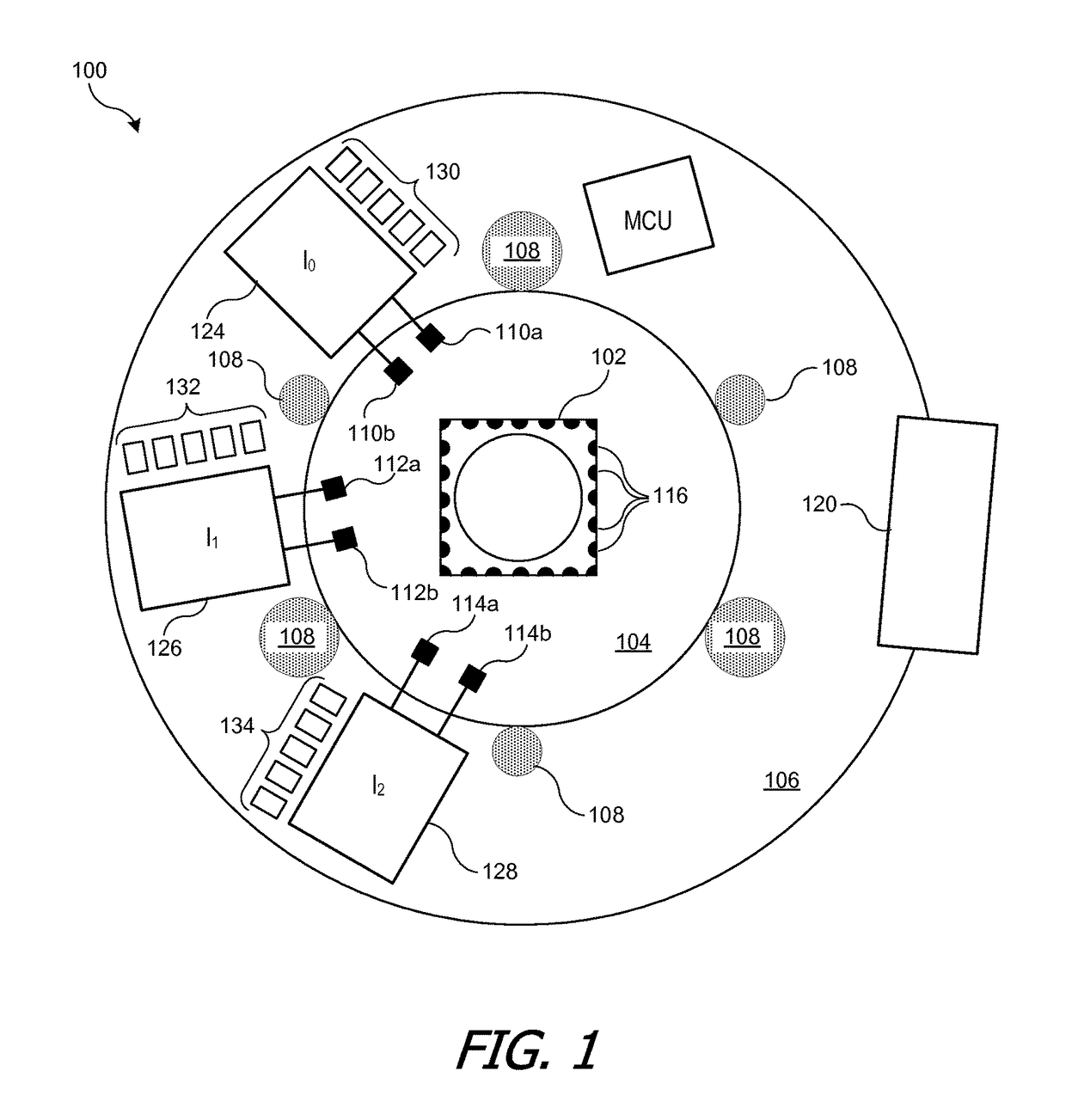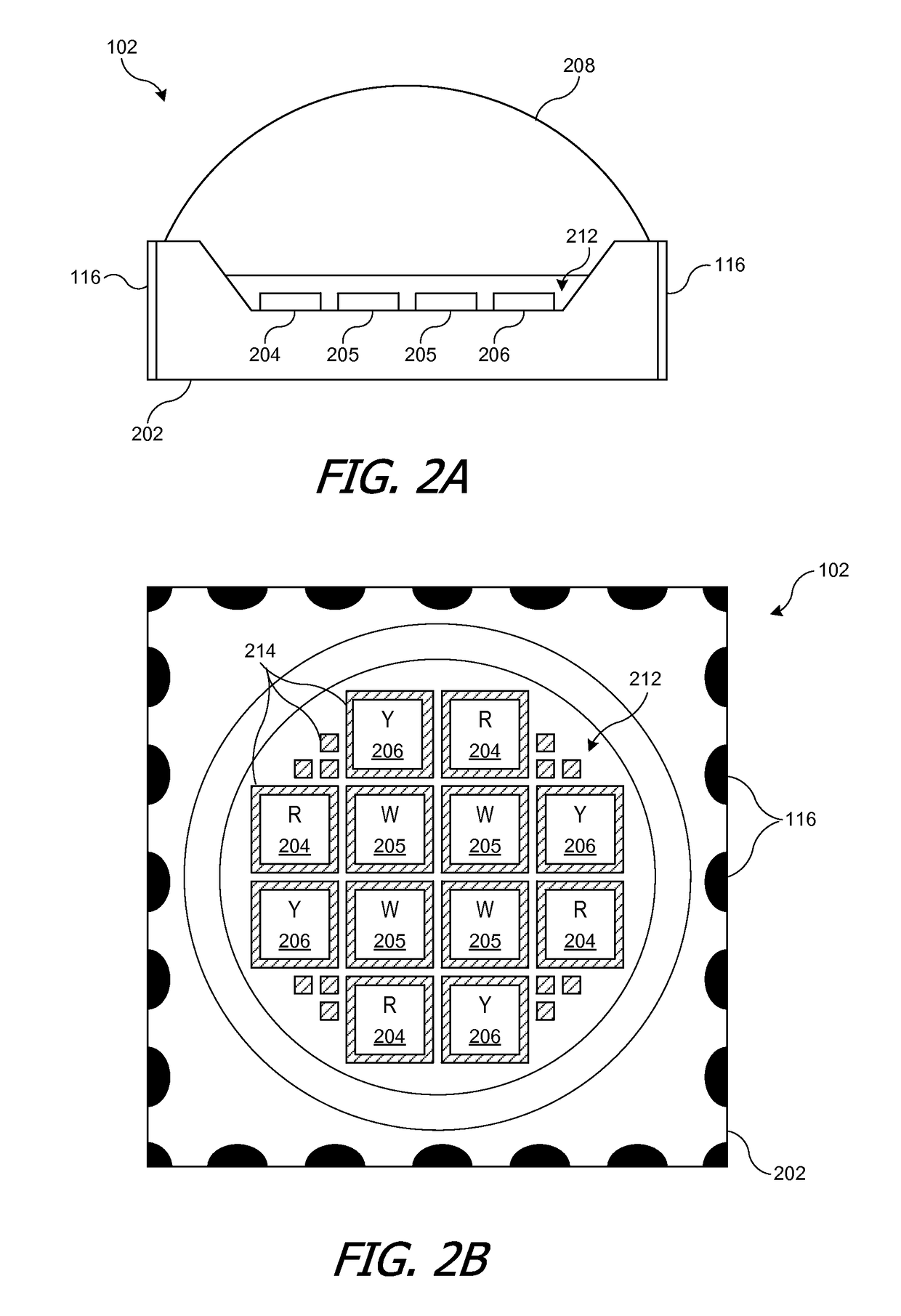Color tunable light source module with brightness and dimming control
a color tunable light source and dimming control technology, applied in the field of lightemitting devices, can solve problems such as white light production, and achieve the effect of controlling the brightness of output ligh
- Summary
- Abstract
- Description
- Claims
- Application Information
AI Technical Summary
Benefits of technology
Problems solved by technology
Method used
Image
Examples
Embodiment Construction
[0033]Certain embodiments of the present invention relate to LED-based light source modules that incorporate color tunability and brightness control. In some embodiments, a user can independently select a desired color temperature and brightness and can change either or both dynamically. To allow dynamic changes in color temperature, the LED-based light source can include a single emitter substrate on which multiple LED dice (also referred to as LEDs) are disposed. The LEDs can be electrically connected into some number of independently addressable groups, with each group producing light of a different color or color temperature. For example, the LEDs can include three groups: one group that emits yellowish light (e.g., blue LEDs with a first quantity of yellow phosphor disposed on a light-emitting surface), one group that emits whitish light (e.g., blue LEDs with a second, smaller, quantity of yellow phosphor disposed on a light-emitting surface), and one group that emits red light...
PUM
 Login to View More
Login to View More Abstract
Description
Claims
Application Information
 Login to View More
Login to View More - R&D
- Intellectual Property
- Life Sciences
- Materials
- Tech Scout
- Unparalleled Data Quality
- Higher Quality Content
- 60% Fewer Hallucinations
Browse by: Latest US Patents, China's latest patents, Technical Efficacy Thesaurus, Application Domain, Technology Topic, Popular Technical Reports.
© 2025 PatSnap. All rights reserved.Legal|Privacy policy|Modern Slavery Act Transparency Statement|Sitemap|About US| Contact US: help@patsnap.com



